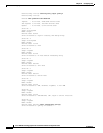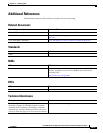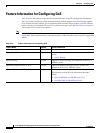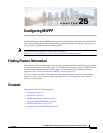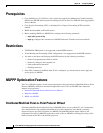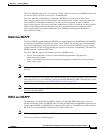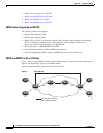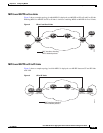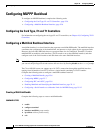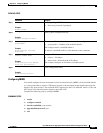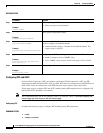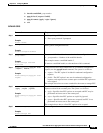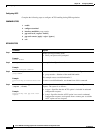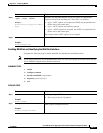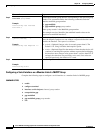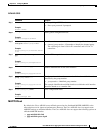
25-6
Cisco ASR 901 Series Aggregation Services Router Software Configuration Guide
OL-23826-09
Chapter25 Configuring MLPPP
Configuring MLPPP Backhaul
Configuring MLPPP Backhaul
To configure an MLPPP backhaul, complete the following tasks:
• Configuring the Card Type, E1 and T1 Controllers, page 25-6
• Configuring a Multilink Backhaul Interface, page 25-6
Configuring the Card Type, E1 and T1 Controllers
For information on configuring the card type, E1 and T1 controllers, see Chapter 18, Configuring T1/E1
Controllers.
Configuring a Multilink Backhaul Interface
A multilink interface is a virtual interface that represents a multilink PPP bundle. The multilink interface
coordinates the configuration of the bundled link, and presents a single object for the aggregate links.
However, the individual PPP links that are aggregated must also be configured. Therefore, to enable
multilink PPP on multiple serial interfaces, you first need to set up the multilink interface, and then
configure each of the serial interfaces and add them to the same multilink interface.
Note In the following procedure, press the Return key after each step unless otherwise noted. At any time,
you can exit the privileged level and return to the user level by entering disable at the Router# prompt.
The Cisco ASR 901 router can support up to 16 E1/T1 connections through the multilink interface,
ranging from 16 bundles of one E1/T1 each to a single bundle containing 16 E1/T1 bundles.
Complete the following tasks to configure a multilink backhaul interface.
• Creating a Multilink Bundle, page 25-6
• Configuring MRRU, page 25-7
• Configuring PFC and ACFC, page 25-8
• Enabling Multilink and Identifying the Multilink Interface, page 25-11
• Configuring a Serial Interface as a Member Link of a MLPPP Group, page 25-12
Creating a Multilink Bundle
Complete the following steps to create a multilink bundle:
SUMMARY STEPS
1. enable
2. configure terminal
3. interface multilink group-number
4. ip address address [subnet mask]
5. exit



